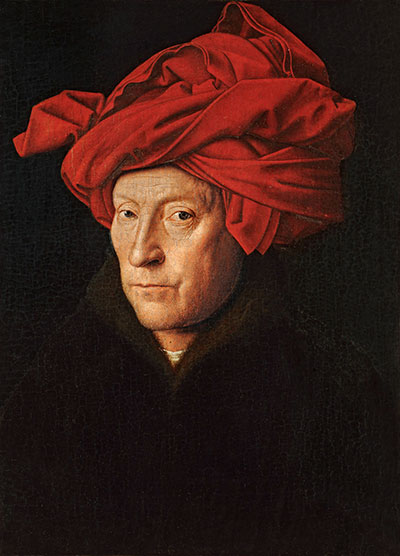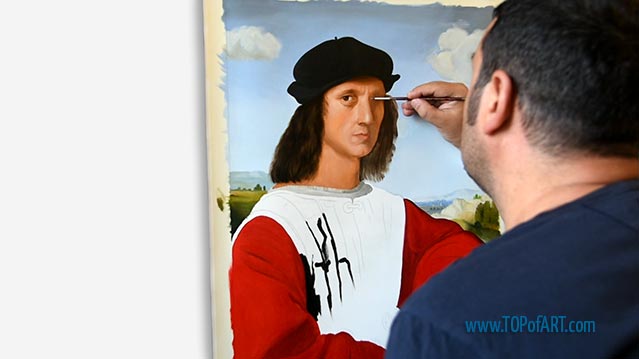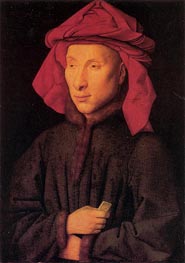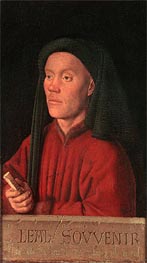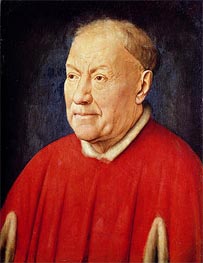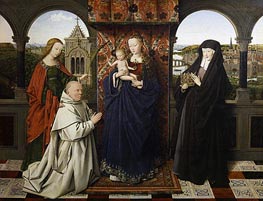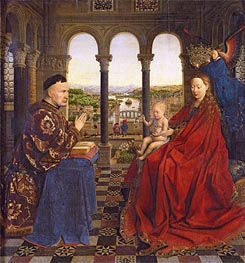A Man in a Turban (Possibly a Self-Portrait), 1433 Jan van Eyck (b.1395-1441)
Location: National Gallery London UKOriginal Size: 26 x 19 cm
Oil Painting Reproduction
If you want a different size than the offered
Description
Painted by European Аrtists with Academic Education
Museum Quality
+ 4 cm (1.6") Margins for Stretching
Creation Time: 8-9 Weeks
Creation Process
We create our paintings with museum quality and covering the highest academic standards. Once we get your order, it will be entirely hand-painted with oil on canvas. All the materials we use are the highest level, being totally artist graded painting materials and linen canvas.
We will add 1.6" (4 cm) additional blank canvas all over the painting for stretching.
High quality and detailing in every inch are time consuming. The reproduction of Jan van Eyck also needs time to dry in order to be completely ready for shipping, as this is crucial to not be damaged during transportation.
Based on the size, level of detail and complexity we need 8-9 weeks to complete the process.
In case the delivery date needs to be extended in time, or we are overloaded with requests, there will be an email sent to you sharing the new timelines of production and delivery.
TOPofART wants to remind you to keep patient, in order to get you the highest quality, being our mission to fulfill your expectations.
We not stretch and frame our oil paintings due to several reasons:
Painting reproduction is a high quality expensive product, which we cannot risk to damage by sending it being stretched.
Also, there are postal restrictions, regarding the size of the shipment.
Additionally, due to the dimensions of the stretched canvas, the shipment price may exceed the price of the product itself.
You can stretch and frame your painting in your local frame-shop.
Delivery
Once the painting A Man in a Turban (Possibly a Self-Portrait) is ready and dry, it will be shipped to your delivery address. The canvas will be rolled-up in a secure postal tube.
We offer free shipping as well as paid express transportation services.
After adding your artwork to the shopping cart, you will be able to check the delivery price using the Estimate Shipping and Tax tool.
Museum Quality
The paintings we create are only of museum quality. Our academy graduated artists will never allow a compromise in the quality and detail of the ordered painting. TOPofART do not work, and will never allow ourselves to work with low quality studios from the Far East. We are based in Europe, and quality is our highest priority.
Additional Information
Van Eyck’s palette here is deliberately spare. Against the near-black ground the single dominant note of red unfurls in saturated variations, from cochineal-rich creases to roseate highlights. Flesh is built from muted ochres and translucent pinks, the tonality cooling into the tender blues that flicker in the five-o’clock shadow. The chromatic austerity heightens psychological immediacy: the image feels at once private and declarative, a performance staged under a raking studio light.
The surface, under magnification, reveals a virtuoso economy. Stubble is conjured by pinprick dots laid wet-in-wet, the darker underlayer anchoring the subsequent flicks of lead white toned with indigo. Eyelids are glazed so thinly that the underdrawn contours—scant and spontaneous—ghost through, testifying to adjustments made in the act of painting. This disciplined swiftness belies the prevailing myth of laborious Netherlandish finish; van Eyck’s triumph is to make velocity and minuteness cohabit.
Composition pivots on calculated distortion. Shoulders recede into a liquid void, disproportionately narrow beneath the monumental head, so that physiognomy becomes landscape. The tight framing suppresses gesture, forcing the eye to shuttle between the twin poles of gaze and head-dress. Diagonals embedded in the turban’s folds echo the subtle cant of the sitter’s nose, pulling the viewer’s attention to the inscription—Als Ich Can—on the original frame, a motto that doubles as wry self-assertion.
Painted in 1433, at the Burgundian court where image functioned as currency of power, this work stands among the earliest self-portraits that acknowledge authorship so explicitly. The date and boastful pun breathe Renaissance individualism into late-medieval convention. More than likeness, the picture proclaims artistic agency: here is a mind that knows both how colors deceive and how perception hungers for them.
